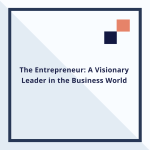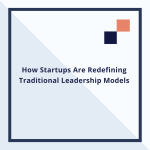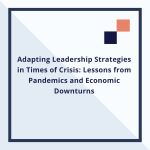In the dynamic and competitive business landscape, organizations need leadership and management practices that not only drive growth but also ensure long-term sustainability. The Leadership and Modern Management Development (LMMD) model offers a comprehensive framework for creating leaders who can adapt to the challenges of the 21st century, focusing on both innovation and responsible governance. Here’s an exploration of the key components of this model and how it contributes to building sustainable organizations.
1. Visionary Leadership At the heart of the LMMD model is visionary leadership. Leaders within this framework are expected to think beyond the present, envisioning future trends, challenges, and opportunities. Visionary leaders do not just react to changes; they anticipate them. They set long-term goals for their organizations and inspire their teams to pursue these objectives with passion and commitment.
This type of leadership is crucial for sustainability because it ensures that businesses are constantly innovating and evolving, not just to meet immediate demands, but to prepare for the future. Visionary leadership encourages proactive thinking, helping organizations stay ahead of competitors and adapt to shifts in the market.
2. Inclusive and Empowering Management The LMMD model places a strong emphasis on inclusive management, which involves fostering an environment where every employee feels valued and empowered to contribute. Modern leadership requires an understanding that diverse perspectives lead to better decision-making and innovation. Inclusivity ensures that management decisions reflect the varied needs and insights of the workforce, driving creative solutions and encouraging greater engagement.
Empowering employees is equally important. Leaders within this model are encouraged to delegate responsibilities and trust their teams to take ownership of tasks. This creates a culture of accountability and enables employees to develop their own leadership skills, ensuring that the organization is not only sustainable in the short term but has the internal capacity for continued growth.
3. Ethical and Sustainable Business Practices One of the most significant aspects of the LMMD model is its focus on sustainability and ethics. In an era where consumers and stakeholders are more conscious of corporate responsibility, businesses need leaders who prioritize environmental, social, and governance (ESG) factors. Ethical leadership involves making decisions that benefit not just the company, but society and the environment as a whole.
The LMMD model encourages leaders to adopt sustainable practices in all aspects of business operations. This includes reducing environmental impact, improving energy efficiency, and ensuring fair labor practices throughout the supply chain. By integrating sustainability into the core of their strategies, leaders can build brands that stand the test of time and attract customers who value responsible business practices.
4. Agile Decision-Making Agility is another cornerstone of the LMMD model. In today’s fast-paced business environment, organizations must be able to pivot quickly in response to new information or changing market conditions. Leaders who follow the LMMD framework are trained to make fast, data-driven decisions while maintaining flexibility in their strategies.
Agile decision-making requires a balance of speed and thoughtfulness. While swift action is often necessary to stay competitive, leaders must also ensure that their decisions are based on solid data and align with the organization’s long-term goals. This balance allows companies to remain adaptable without losing sight of their vision for sustainability.
5. Continuous Learning and Development Sustainable leadership under the LMMD model is also about fostering a culture of continuous learning. The business world is constantly evolving, and leaders must stay informed about the latest trends, technologies, and management practices. Continuous learning ensures that leaders are always equipped with the knowledge and skills needed to navigate challenges and seize opportunities.
In addition to personal development, LMMD encourages leaders to invest in the growth of their teams. Providing employees with opportunities for professional development not only enhances their capabilities but also strengthens the organization as a whole. A culture of learning fosters innovation, adaptability, and resilience—all essential components for long-term sustainability.
6. Collaborative Leadership The LMMD model recognizes that no leader can succeed in isolation. Collaboration is essential for sustainable management, whether it’s within the organization or through partnerships with external stakeholders. Modern leaders are encouraged to break down silos and promote cross-functional teamwork, allowing for the free flow of ideas and resources.
Externally, collaborative leadership involves building strong relationships with partners, suppliers, and even competitors. By working together, businesses can create shared value, solve industry-wide challenges, and drive sustainable growth. Collaborative leadership also extends to engaging with local communities and customers, ensuring that the business contributes positively to society.
7. Data-Driven Leadership Data is the backbone of modern decision-making. The LMMD model highlights the importance of using data and analytics to inform leadership and management strategies. Leaders are encouraged to embrace technology, leverage big data, and make evidence-based decisions that enhance operational efficiency and customer satisfaction.
Data-driven leadership is not only about reacting to trends but also about predicting future outcomes. By utilizing advanced analytics, leaders can forecast changes in customer behavior, market conditions, and industry dynamics, allowing them to make proactive decisions that align with long-term sustainability goals.
Conclusion: Building Sustainable Leadership for the Future The Leadership and Modern Management Development (LMMD) model provides a comprehensive approach to leadership that is grounded in sustainability, ethical business practices, and adaptability. In today’s complex and ever-changing business environment, leaders need to be more than just managers—they must be visionaries, innovators, and champions of responsible governance.
By fostering inclusive cultures, embracing agility, and committing to continuous learning, leaders following the LMMD model can ensure that their organizations are not only successful in the short term but built for long-term sustainability. As businesses face increasing pressure to balance profitability with social and environmental responsibility, the LMMD model offers a path to leadership that can create a positive impact for years to come.





